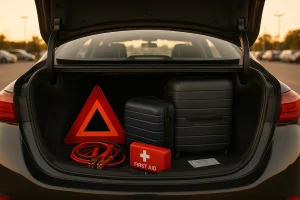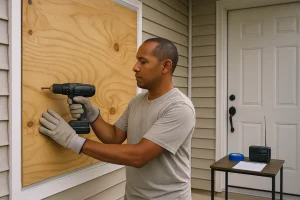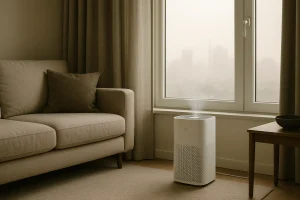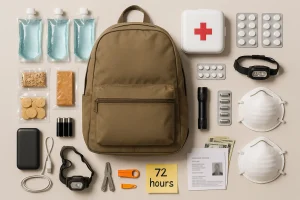Wildfire Smoke Safety: HEPA at Home, Masks, and When to Stay Inside
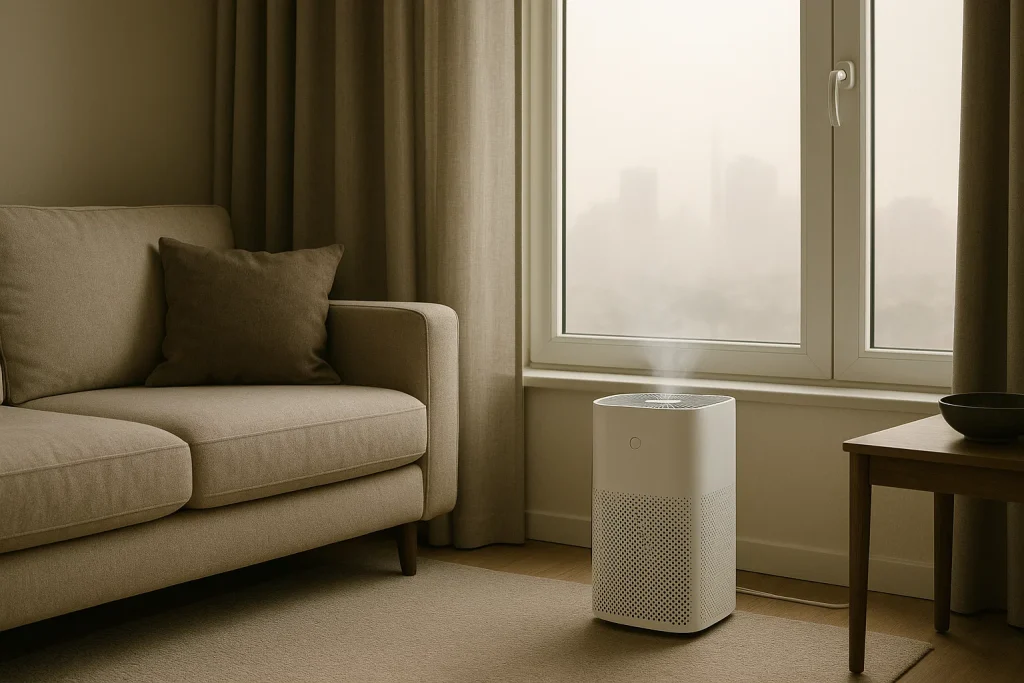
Seal leaks and run a HEPA purifier to lower indoor PM2.5.
Quick Steps: Check AirNow or local AQI. At AQI ≥101 (USG), sensitive groups limit outdoor time; at ≥151 (Unhealthy), most people should stay inside; at ≥201 (Very Unhealthy), keep everyone indoors if possible. Run a HEPA purifier in a closed clean room, seal leaks, set HVAC to recirculate, and wear a NIOSH-approved N95 if you must go out. Call 911 for emergencies.
Wildfire Smoke Safety 2025: Why this matters now
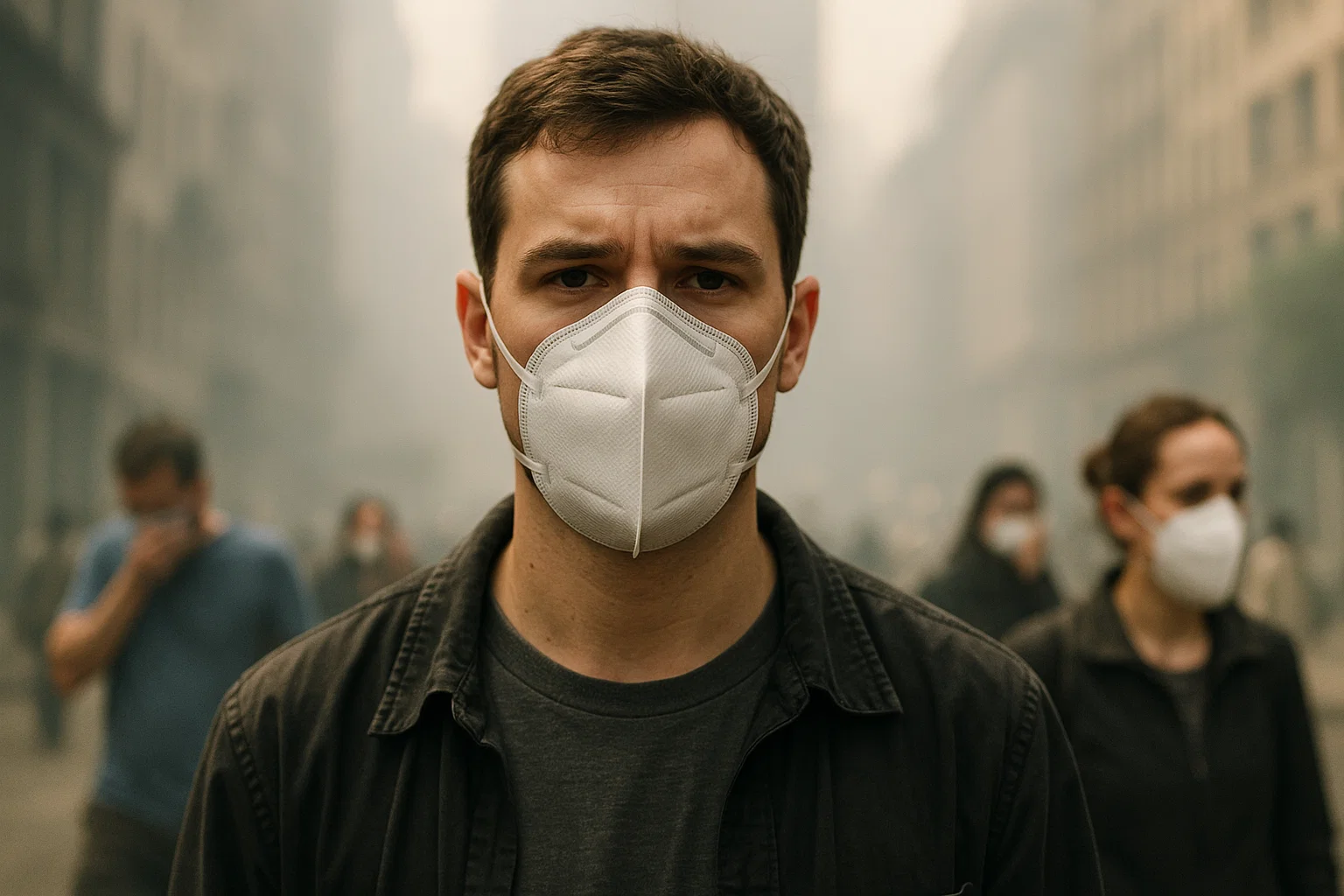
Wildfire smoke safety is now a life skill, not a niche topic. Fire seasons are longer, smoke travels across states and countries, and even cities far from a burn can see sudden spikes in fine particles (PM2.5). The goal of this guide is simple: give you fast, plain-language steps that protect your lungs and keep your day moving. You’ll learn when to stay inside, how to make a low-cost clean room that actually works, how to use a HEPA purifier, and how to fit an N95 so it performs the way the label promises.
Planning ahead? See our Hurricane Preparedness Checklist and build a fast 72-Hour Go-Bag so you’re ready before smoke or storms arrive.
How AQI works (and the cutoffs to act on)
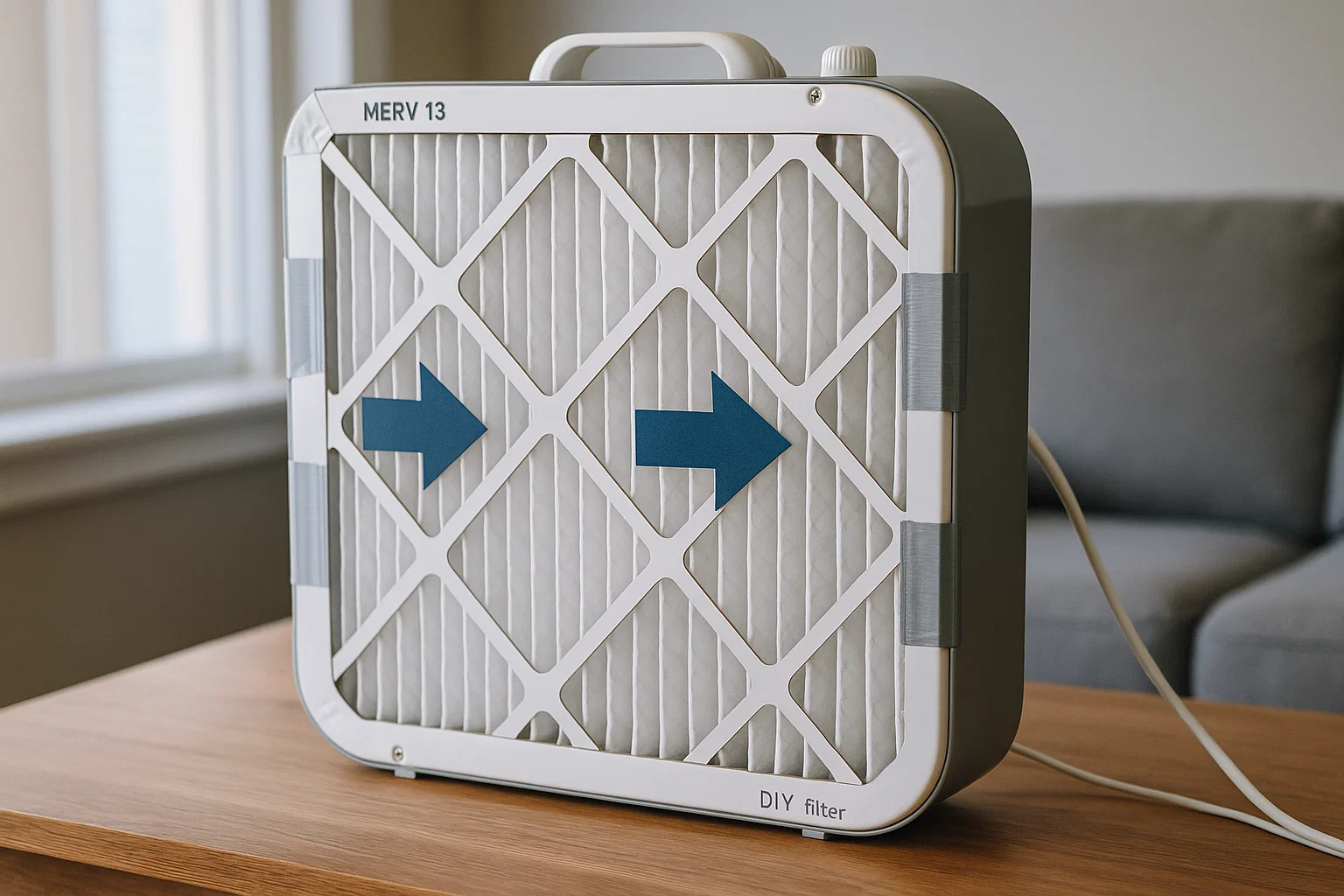
The Air Quality Index (AQI) is a number and color system that turns complex pollution data into decisions. For wildfire smoke, the main pollutant is PM2.5—tiny particles that reach deep into the lungs. Key ranges:
- 0–50 (Good): Normal activities.
- 51–100 (Moderate): Unusually sensitive people monitor symptoms.
- 101–150 (Unhealthy for Sensitive Groups / USG): Kids, older adults, people pregnant, and anyone with heart or lung disease should limit outdoor time and intensity.
- 151–200 (Unhealthy): Move most activities indoors; shorten unavoidable outdoor trips; wear an N95.
- 201–300 (Very Unhealthy): Keep everyone indoors if possible; use a clean room; consider relocating to cleaner air for high-risk family members.
- 301+ (Hazardous): Stay inside; if you can’t achieve clean air, go to a cleaner location.
Bookmark: AirNow for national maps and your local AQI page. Watch the hourly trend, not just a single number.
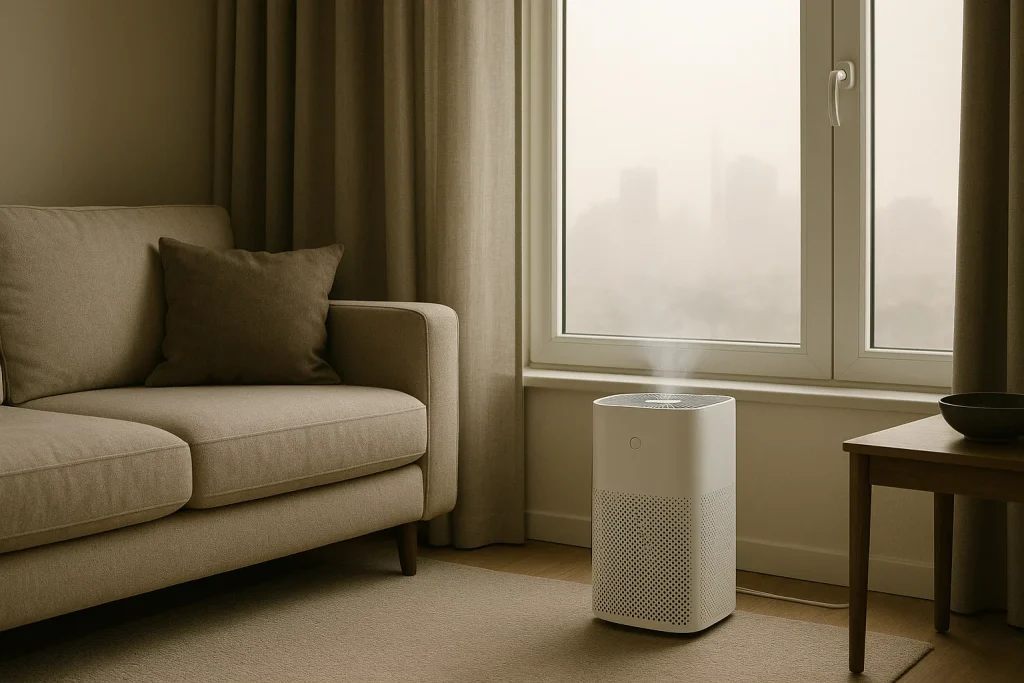
Who’s at higher risk (and what to change for them)
Anyone can feel the effects of smoke—scratchy throat, cough, burning eyes, headache, fatigue—but some people face higher risk:
- Kids & teens: Lungs still developing; move play and sports indoors; choose spaces with filtration.
- Older adults: Prioritize rest and a quiet clean room with easy access to meds and water.
- Pregnancy: Minimize exposure; build a clean room; use an N95 outdoors when AQI is elevated.
- Asthma, COPD, heart disease, diabetes: Follow your action plan; keep rescue inhalers and medications close; set phone reminders to check AQI morning/evening.
- Outdoor workers & athletes: Schedule around smoke peaks; shorten sessions; use N95s when feasible; rotate tasks to limit exposure.
When to stay inside—and what “inside” should look like
At AQI ≥151, most people should move activities indoors. At ≥201, keep everyone inside if possible. “Inside” only helps if your indoor air is cleaner than outdoors. Aim for two things: filter the air and reduce infiltration.
- Filter: Use a HEPA purifier sized for the room. Run it continuously on medium/high during a smoke event.
- Seal: Close windows and doors; block obvious gaps with weatherstripping or even painter’s tape in a pinch.
- HVAC: Set to recirculate. If your system can handle it, use a higher-rated filter (ask your tech if MERV-13+ is safe for your blower).
- Source control: Avoid candles, incense, smoking, vacuuming (unless you own a true-HEPA vacuum), and frying—these add particles.
Build a low-cost clean room (step-by-step)
- Pick the room: Bedroom or living room with a door. Close windows/vents if they pull outdoor air.
- Seal: Use weatherstrip or painter’s tape on leaky sashes and door gaps. Roll a towel at the base of a drafty door.
- HEPA on: Place a portable HEPA purifier 3–6 feet from the main sitting/sleeping area; let it run continuously.
- DIY backup: If you lack a purifier, make a box-fan + MERV-13 cleaner. Use a newer (2012+) fan with safety features; attach the filter tightly to the intake; never leave it unattended; keep away from children/pets; unplug when leaving the room.
- Check results: If you have an indoor PM monitor, aim for a sharp drop in PM2.5 within 30–60 minutes.
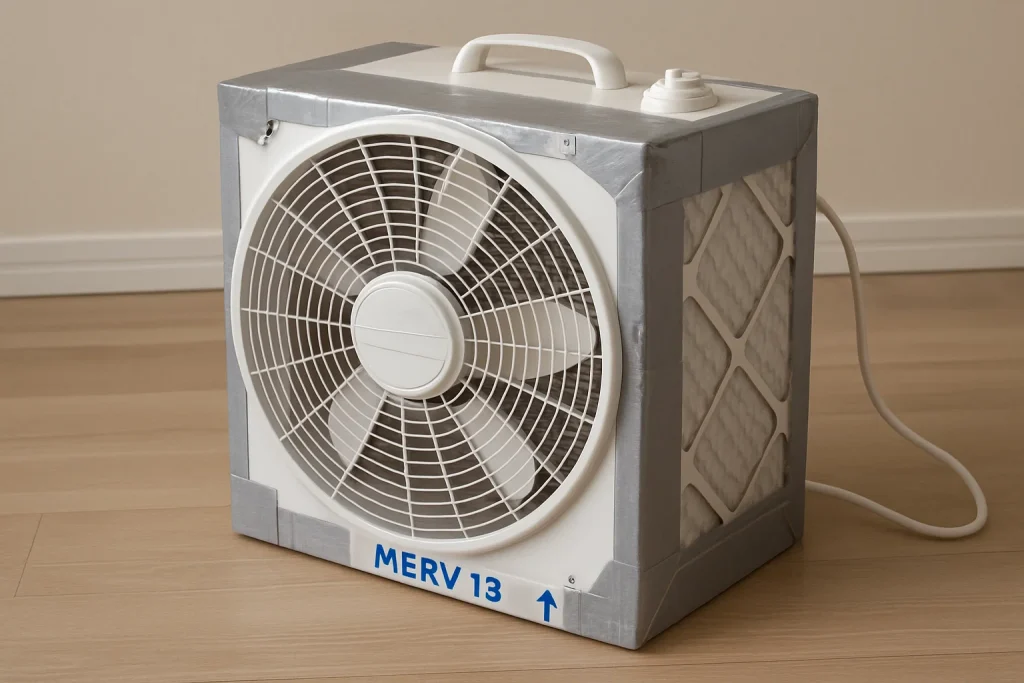
N95s outside: make it work like the label
A NIOSH-approved N95 (or P100) filters small particles when the seal is good. Quick fit checklist:
- Look for “NIOSH” on the mask body. Avoid fashion masks.
- Mold the nose clip firmly; smooth the edges with your fingertips.
- Straps: one across the crown, one at the neck—no criss-crossing.
- Check for leaks: inhale gently—mask should draw slightly inward.
- Facial hair breaks the seal; shave or use an alternative respiratory solution if you must work in smoke.
- Change the respirator when breathing becomes harder or it’s dirty/wet.
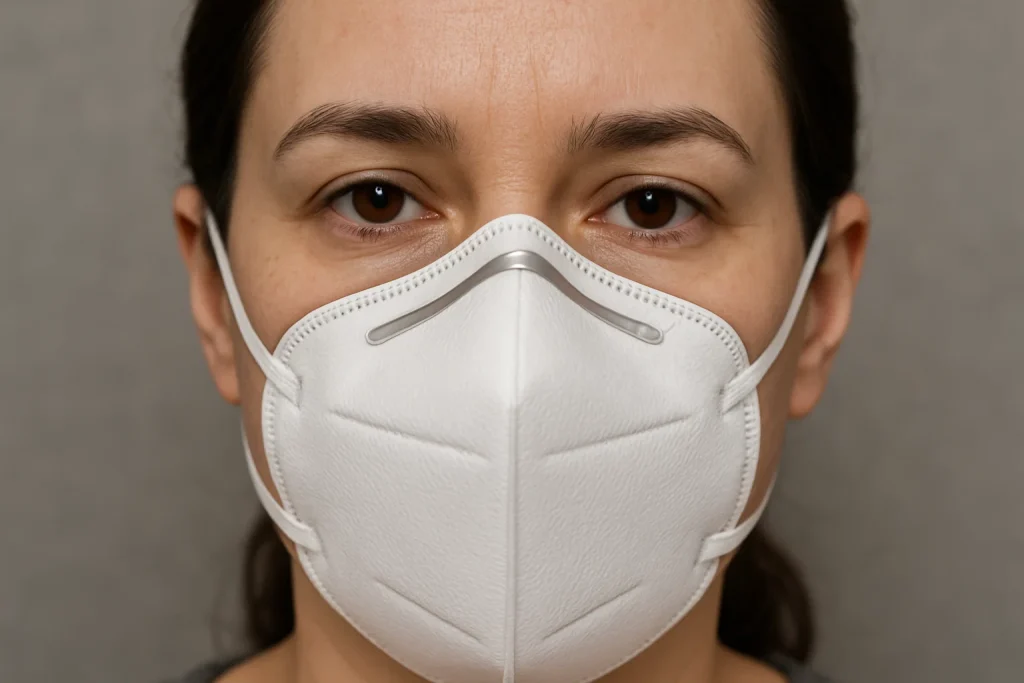
Daily playbook by AQI (what to do in plain English)
| AQI | At home | Workouts & errands | Kids & older adults |
|---|---|---|---|
| 0–50 | Ventilate; open windows. | Outdoor workouts fine. | Normal routine. |
| 51–100 | Monitor symptoms if sensitive. | Light outdoor training OK. | Pick indoor activities if eyes/throat sting. |
| 101–150 | Seal leaks; turn on HEPA. | Move cardio indoors. | Keep kids’ play inside; check on older adults. |
| 151–200 | Stay indoors; clean room on high. | Indoor workouts; N95 if you must go out. | Limit trips; prioritize meds and cool air. |
| 201–300 | Strictly indoors; consider relocating. | Essential trips only; N95. | Keep vulnerable family in the cleanest room. |
| 301+ | Hazardous—seek cleaner air if home leaks. | Defer travel; remote work if possible. | Monitor closely; call for help if symptoms worsen. |
HVAC and car settings that help, not hurt
- Home HVAC: Set to recirculate; run the fan continuously. Ask a technician whether your unit can handle MERV-13+ filters without damaging the blower.
- Car: Use recirc, close windows, and keep trips short during high AQI. Cabin filters capture some particles—upgrade if your model allows.
Schools, gyms, workplaces: questions that get results
- Do you have a stated plan for wildfire smoke safety days?
- Are indoor spaces filtered with HEPA or upgraded central filtration?
- Can practices or shifts move outside of peak smoke hours?
- Are N95s available for staff and students who need them?
Symptoms to watch (and when to stop)
- Eyes: burning, tearing, redness—move to the clean room.
- Lungs: cough, tight chest, wheeze—use prescribed meds; cut exposure.
- Systemic: headache, unusual fatigue—hydrate, rest, and get clean air.
- Emergency signs: trouble breathing, chest pain, confusion—call 911.
Pets and smoke
Pets feel smoke too. Keep them indoors during high AQI; limit intense play; provide fresh water; wipe paws/fur when coming inside; watch for cough, wheeze, or eye irritation. Contact your vet if symptoms persist.
Travel playbook
- Pack a compact HEPA or plan a DIY option on arrival.
- Book hotels with in-room HVAC you can set to recirc.
- Carry a few N95s and eye drops; save the AirNow page for your destination.
Myths to ignore
- “A cloth mask is enough for smoke.” Not for PM2.5. Use a NIOSH-approved N95 or better.
- “Crack a window to let the smoke out.” During smoke events, you want fewer leaks, not more.
- “Candles clean the air.” They add particles—skip them.
Printable checklist: your wildfire smoke safety plan
- Check AQI morning/evening (AirNow or your local site).
- Pick a clean room; run a HEPA; seal leaks; avoid particle sources.
- Set HVAC to recirculate; upgrade filters if safe for your unit.
- Stock N95s that fit; teach everyone how to wear them.
- Plan indoor workouts and kids’ activities during smoke peaks.
- Keep meds, water, and eye drops handy; know emergency signs.
In Summary
As climate change intensifies, the hazy, orange pall of wildfire smoke is becoming an unwelcome seasonal reality for millions. This smoke is more than an inconvenience; it’s a serious health hazard composed of a toxic mix of gases and fine particles that can penetrate deep into your lungs and even enter your bloodstream. Protecting yourself requires a clear strategy centered on your indoor air quality and knowing when to venture out.
The most effective protection begins at home. Your goal is to create a clean air sanctuary. First, keep windows and doors closed to prevent smoke from entering. While this seems obvious, it’s the critical first step. If you have an air conditioning system, set it to recirculate mode to avoid pulling in outside air, and ensure your filters are clean.
The cornerstone of indoor air purification is a HEPA (High-Efficiency Particulate Air) filter. These filters are uniquely capable of capturing the microscopic PM2.5 particles that make wildfire smoke so dangerous. You have two excellent options:
-
Portable HEPA Air Purifiers: These standalone units are highly effective for single rooms. Place one in the bedroom for undisturbed sleep and another in a main living area. Choose a model appropriately sized for the room’s square footage for maximum efficiency.
-
A DIY Box Fan Filter (Corsi-Rosenthal Box): For a low-cost, highly effective solution, you can build a air cleaner by attaching a standard MERV-13 or higher furnace filter to the front of a box fan with duct tape. This homemade unit can dramatically reduce particulate levels in a room and is a powerful community-driven innovation.
When you must go outside, the right mask is essential. Not all face coverings are created equal. Cloth masks and standard surgical masks offer little protection against smoke particles. Instead, you need a respirator designed to filter out fine particulates.
An N95 respirator is the gold standard. When fitted properly—forming a tight seal around your nose and mouth—it can block at least 95% of airborne particles. KN95 and KF94 masks also offer excellent protection. The key is fit; if air leaks around the edges, you’re breathing unfiltered air.
The simplest rule is often the best: when you can smell smoke, it’s time to limit exposure. However, rely on more than just your nose. Use tools like the EPA’s AirNow.gov website or its app to check the Air Quality Index (AQI) in your area. An AQI over 100 (Code Orange) is unhealthy for sensitive groups, while anything over 150 (Code Red) is unhealthy for everyone. On “Red” or “Purple” days, it is prudent to postpone strenuous outdoor activities, errands, and exercise. Reschedule the jog, and let the kids play indoors.
As wildfire seasons grow longer and more severe, being prepared is no longer optional. By taking proactive steps to clean your indoor air, using proper respiratory protection when necessary, and heeding air quality warnings, you can significantly reduce your health risk and navigate smoky days with greater confidence and safety.
FAQs
Is a HEPA purifier better than a DIY box-fan filter?
Usually yes—HEPA units are tested and quiet. A carefully built DIY box-fan + MERV-13 filter helps in a pinch. Use newer fans with safety features, secure the filter, and never leave it unattended.
Do surgical or cloth masks help with smoke?
They don’t filter small particles well. A NIOSH-approved N95 with a good seal is the standard for outdoor smoke exposure.
What if my house is hot and smoky?
Heat illness is dangerous. Find a cooler, cleaner location (friend/family, mall, community clean-air center) if you can. Use fans for cooling inside your clean room; keep windows closed during smoke peaks.
How do I know my clean room works?
If you have an indoor PM monitor, you should see a large drop in PM2.5 within an hour. Without a monitor, trust the process: sealed room + HEPA on continuous usually feels better quickly (less odor/irritation).
Related Guides
- Hurricane Preparedness Checklist 2025: Before, During & After
- Heat Advisory 2025: Signs of Heat Illness & What to Do Now
- Emergency Go-Bag Checklist: 20 Essentials for 72 Hours
- Labor Day Travel Safety 2025: Car Kit, Rideshare & Hotel Checks
- More in Safety & Preparedness
Helpful links
- AirNow – AQI Basics
- EPA – Wildfires & Indoor Air Quality
- EPA – Create a Clean Room
- EPA – DIY Air Cleaner
- CDC – Wildfire Smoke
- NIOSH – Wildfire Smoke & Respirators
This guide is educational only—this isn’t medical or legal advice. Follow local public-health guidance and emergency alerts. Call 911 for emergencies.


